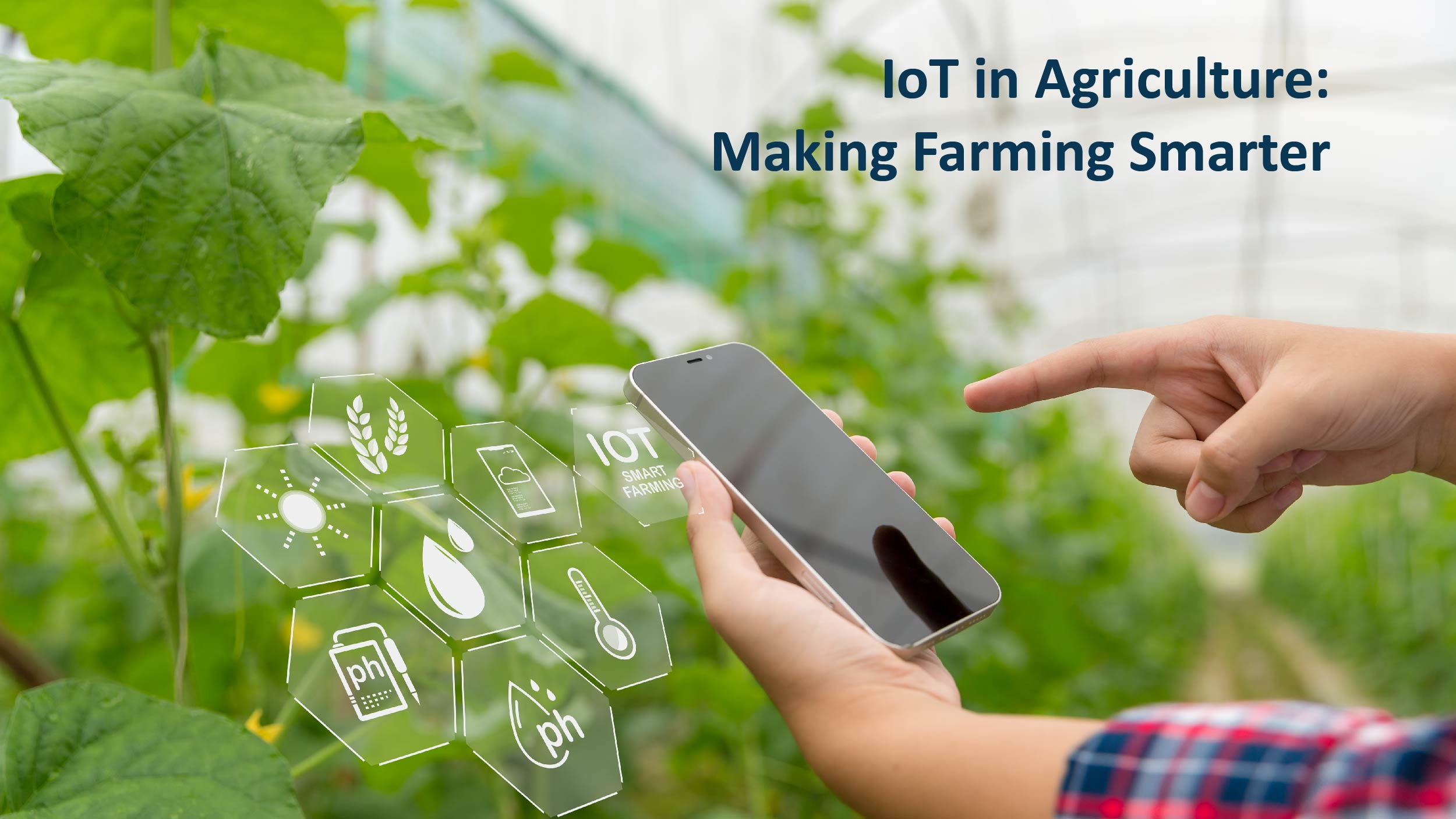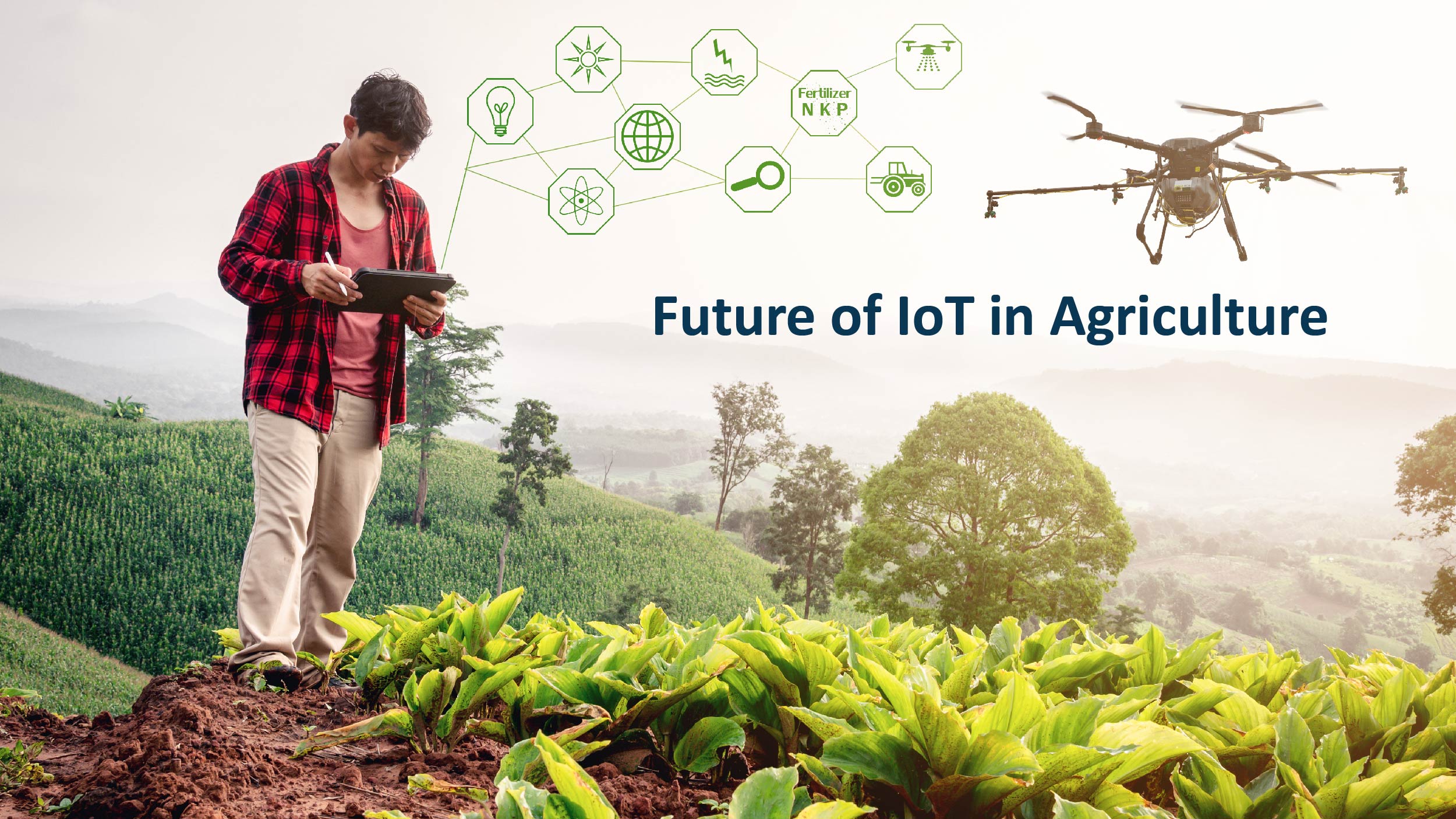The agriculture industry is facing the challenge of feeding a growing population that is expected to reach $9.6 billion by 2050. To meet this demand, the agricultural sector needs to embrace new technologies. The application of IoT (Internet of Things) in agriculture is one such technological advancement that can enhance operational efficiency, reduce costs, minimize waste, and improve crop quality.
So, what exactly is smart farming? Smart farming is a sophisticated and technology-driven approach to growing food sustainably and cleanly on a large scale. It involves integrating modern Information and Communication Technologies (ICT) into agricultural practices.
In IoT-based smart farming, sensors measuring temperature, humidity, light, and soil moisture are employed to monitor the crop field. It also automates the irrigation system. Farmers can remotely monitor field conditions from anywhere. This approach proves to be highly efficient when compared to traditional methods.
Now, let’s explore the main applications of IoT in agriculture.
What Is IoT in Agriculture?
IoT (Internet of Things) in agriculture refers to the use of sensors, cameras, and other devices to connect and control various elements and actions in farming. It involves leveraging technology to optimize agricultural practices, improve efficiency, and make informed decisions.
By using IoT sensors to collect environmental and machine data, farmers can monitor field and livestock conditions in real time. This data-driven approach, known as smart agriculture or precision agriculture, enables farmers to optimize resource utilization, reduce wastage, and increase productivity.
The adoption of IoT in agriculture is rapidly growing, with the market expected to reach billions of dollars in the coming years. IoT technology offers a range of benefits, including improved labor productivity, cost savings in operations like irrigation and fertilization, and the ability to make data-driven decisions.
Also Read : A Beginner’s Guide to Mastering Directed Energy Weapons
IoT in Agriculture: Making Farming Smarter

There are multiple applications of IoT in smart agriculture. Some of them have been discussed below:
- Precision Farming: Precision farming is a smart way of farming that uses technology to improve accuracy in raising animals and growing crops. This includes using things like computers, sensors, robots, and automated machines. High-speed internet, mobile phones, and affordable satellites play a big role in making precision farming possible.
An example of precision farming is CropMetrics. It uses advanced farming solutions and focuses on managing precision irrigation. This helps farmers maximize profits, improve yields, and use water more efficiently.
- Agricultural Drones: Farmers now use drones in agriculture for various tasks like checking crop health, monitoring irrigation, and analyzing soil. Drones provide benefits such as showing the health of crops, making maps, being easy to use, saving time, and potentially increasing crop yields. PrecisionHawk is a company that uses drones with special cameras to collect useful data on farmland. The drones can tell us things like plant health, how many plants there are, how tall they are, and so on. This information helps farmers make better decisions about their crops.
- Livestock Monitoring: Big farms can use wireless technology to keep track of where their animals are and how they’re doing. This helps them find and separate sick animals quickly, preventing diseases from spreading. JMB North America offers solutions for monitoring cows, helping farmers keep an eye on pregnant cows and know when they’re about to give birth. This technology saves time for farmers and lets them focus on animals that need extra care.
- Smart Greenhouses: Greenhouse farming is a way to grow fruits and vegetables in a controlled environment. Smart greenhouses use IoT to monitor and control the climate without needing constant human intervention. Different sensors measure things like temperature and humidity, and when connected to the internet, the system can be controlled remotely.
This means farmers don’t have to be in the greenhouse all the time. The system can process data and make adjustments to create the best conditions for the plants, saving money and effort for the farmers.
Future of IoT in Agriculture

IoT in agriculture has huge potential, transforming how we cultivate crops, raise livestock, and manage farms. Modern farmers face challenges with shrinking lands and depleting natural resources. By utilizing connected devices, sensors, and data analytics, farmers can optimize resources, increase productivity, and make sustainable decisions.
With the global population rising, there’s a need to meet growing food demand. Precision farming emerges as a key solution, going beyond traditional methods to reduce costs, increase crop yields, and optimize resource use. IoT-powered smart solutions not only ensure farmers’ profitability but also prioritize environmental protection, making farming more efficient and sustainable.
Winding Up
IoT in agriculture brings a new wave of innovation and efficiency to the farming industry. By harnessing the power of smart technology and data-driven insights, farmers can make informed decisions, optimize resource usage, and enhance productivity. With IoT, farming becomes smarter, more sustainable, and better equipped to meet the world’s growing food demands. Embracing IoT in agriculture opens up a world of possibilities, transforming traditional farming practices and paving the way for a more connected and productive future.




